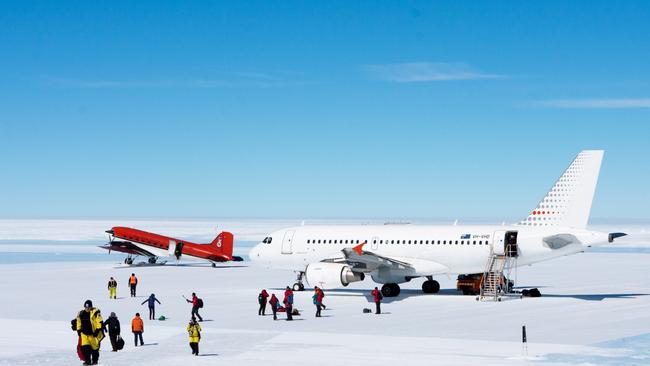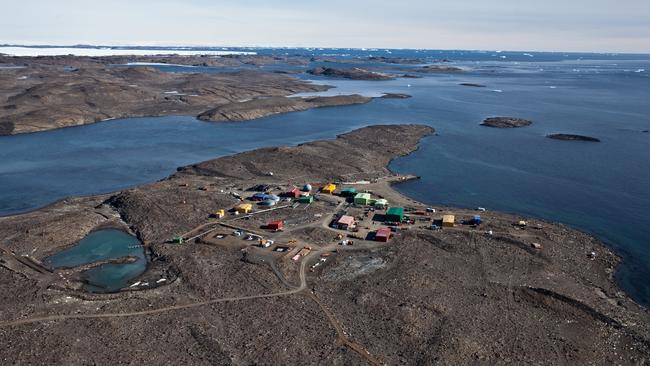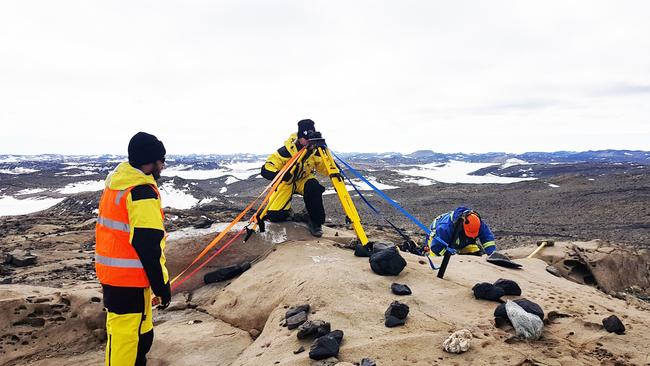They pave paradise, put up a landing lot
Backers of a move to build a concrete runway in Antarctica believe it will ‘revolutionise’ science.

Building a concrete runway in Antarctica may be akin to putting a gate on the world’s last wilderness, but its backers believe it will “revolutionise” science and make Australia a gatekeeper.
Ambitious plans to build Antarctica’s first paved runway — a 2.7km strip near Australia’s Davis Station — would transform the nation’s activities on the frozen continent, ending reliance on ships and an ice runway, at Wilkins, prone to melting.
The Australian Antarctic Division, which is seeking federal environmental approval for the runway, concedes there would be impacts on wildlife, while critics claim it undermines Australia’s commitment to protecting the continent.
AAD acting director Rob Bryson told The Weekend Australian the project would transform Antarctic operations and other nations wanting to use the runway would need to adhere to Australia’s rules.
“Yes, we’re going to be putting a gate on it (Antarctica), but we care for the continent,” Mr Bryson said. “And even though this is a major project that will have unavoidable impacts on the environment, if we do this we will do it to the best ability we can.
“And when it’s in operation it will be about controlling that access to the continent … Those nations who want to come to Antarctica with us will have to go through our policies and procedures.
“It will be our aircraft, controlled by us, on to our airfield. From there we will look to provide facilities for intracontinental flights — for people to come from other nations’ (stations) to pick their people up from there.”
Davis’s concrete runway would be a “hub” with “spokes” allowing smaller intracontinental flights into the field and to other stations.

“It’s pretty central to all of East Antarctica — you’ve got the Chinese, the Russians, the Indians, and Belarus, within flight range, and the Japanese,” Mr Bryson said. “It will become a major centre for intracontinental aviation in East Antarctica.”
The runway would be made of 11,500 pre-made concrete pavers, each weighing 10.5 tonnes, while a major new wharf would be required at Davis, to accommodate the nine ship trips a year for a decade required to ferry the necessary materials and workers.
As well, there would be a 4.5km gravel access road from Davis to the aerodrome.
It would allow greater year-round access to Antarctica, deep field science work and deployment of scientific drones.
“There’s going to be an increasing importance for autonomous systems — drone aircraft, robot floats, submarines, gliders — to breach the gap between boots on the snow and satellites,” AAD acting chief scientist Tas van Ommen said.

“A lot of those instruments are going to be more effectively deployed if you’ve got a human presence and to extend that throughout the year becomes the linchpin.”
Some are concerned, however, that such easy, year-round access will erode the primacy of wilderness protection.
Conservationist Alistair Graham said: “It really is a game changer. This is not respect for wilderness or wildlife. This is basically turning Antarctica into just another place to go play games in.”




To join the conversation, please log in. Don't have an account? Register
Join the conversation, you are commenting as Logout